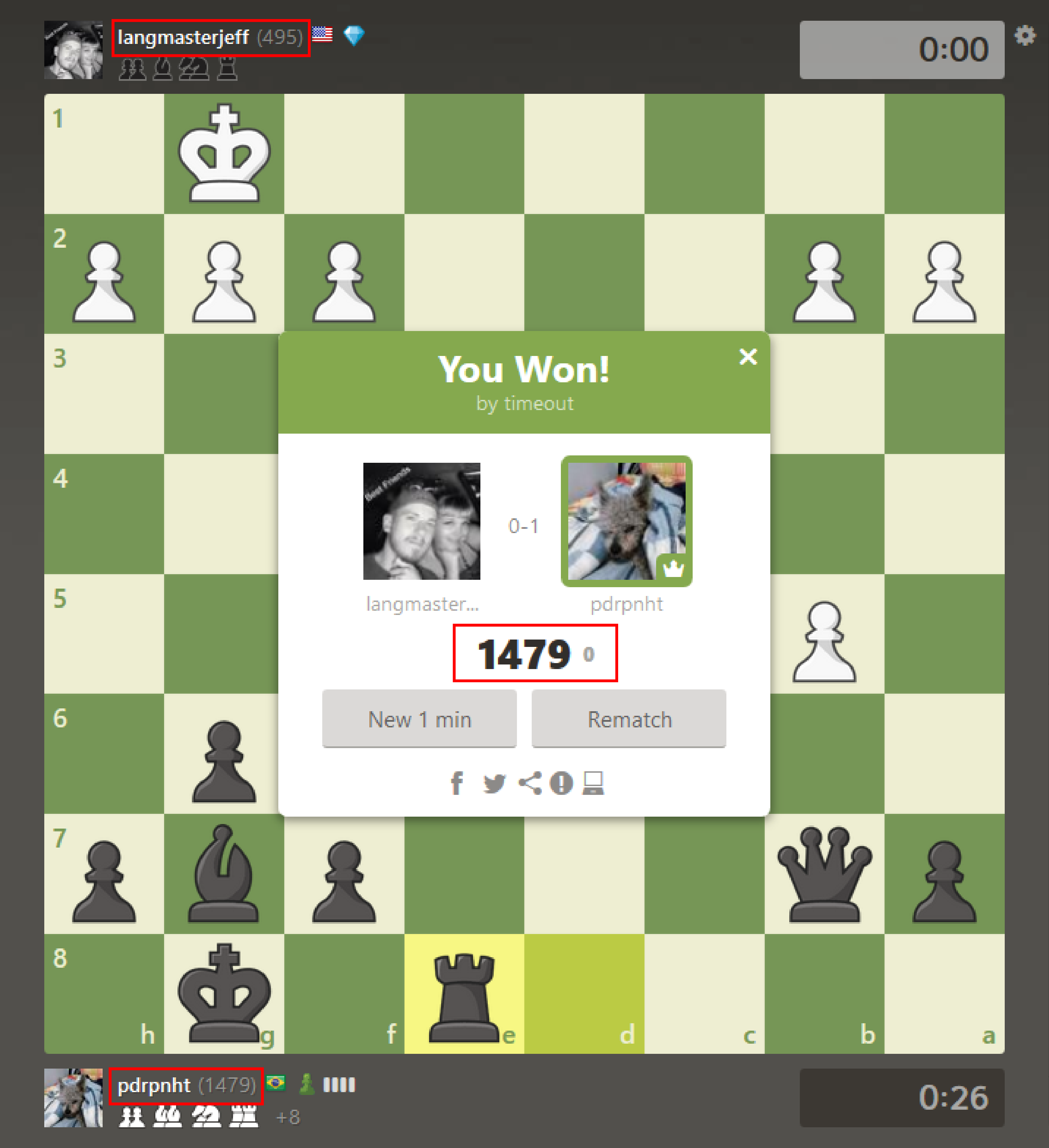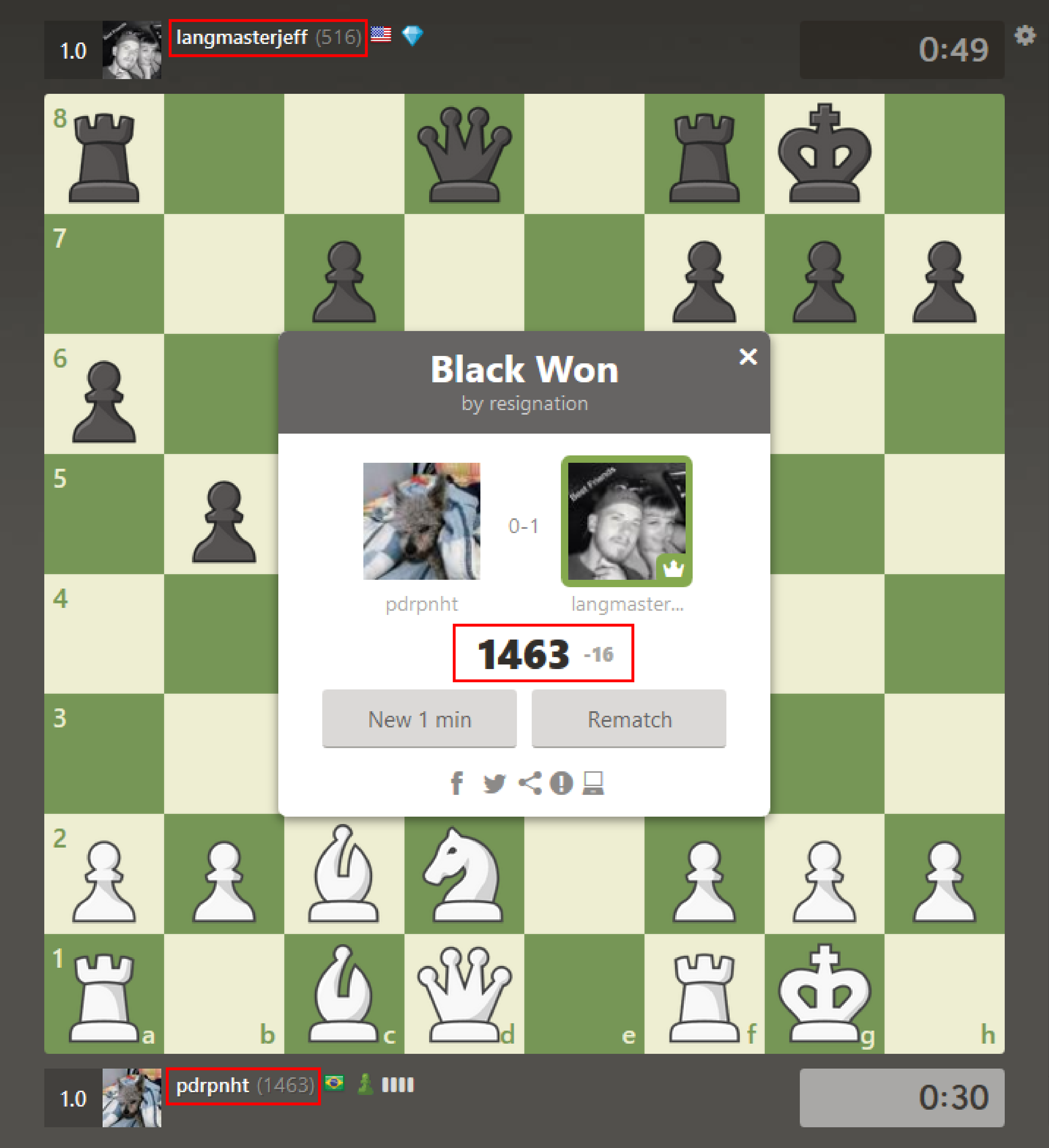
Elo Rating System
Chess players are often curious to compare their abilities to those of their peers. This article teaches everything you need to know about the widely accepted method to assess a player's strength known as the Elo rating system.
- What Is The Elo Rating System?
- How Does The Elo Rating System Work?
- Why Is The Elo Rating System Important?
- Player Category According To Rating
- How To Play Rated Games On Chess.com
- Conclusion
What Is The Elo Rating System?
The Elo rating system measures the relative strength of a player in some games, such as chess, compared to other players. Its creator, Arpad Elo, was a physics professor in the United States and a chess master who worked to improve the way the U.S. Chess Federation measured their players' skill levels. He was a solid chess player himself, as you can see from this game he played against a young Bobby Fischer.
The Elo rating system was officially adopted by the U.S. Chess Federation in 1960 and by FIDE in 1970. Many chess organizations and websites also use this system to rate players. On Chess.com, we use a modified version of the Elo system called the Glicko system, which takes more variables into consideration to determine a player's rating.
The 16th World Champion GM Magnus Carlsen holds the record for the highest Elo rating ever achieved by a human player. He reached an impressive classical rating of 2882 in 2014. As of June 2020, Carlsen is the highest-rated player for classical and rapid time controls and second in blitz (behind GM Hikaru Nakamura).

How Does The Elo Rating System Work?
Each player's Elo rating is represented by a number that reflects that person's results in previous rated games. After each rated game, their ratings are adjusted according to the outcome of the encounter.
While people usually think of the Elo rating system as a way of measuring a player's absolute strength, you should note that this is not the case. This system calculates the probable outcome of a person's games against other players.
As a general rule of thumb, a player who is rated 100 points higher than their opponent is expected to win roughly five out of eight (64%) games. A player with a 200-point advantage will presumably win three out of four (75%) games.

Calculating the probable outcome of chess games is one of the fascinating aspects of this rating system: it takes into consideration the fluctuations in a player's performance. From time to time, we all have bad days when we play poorly. Even when we are at our best, we can still slip up and make a game-losing blunder.
Lower-rated players can still beat someone who is rated higher than them, and the Elo system calculates the probability of that happening. However, if both players face each other in a match of multiple games, the player with the higher rating probably wins most of the games.
Another feature of this system is that the rating gap between the players dictates how many points they can win or lose. Since a much higher rated player is expected to win, they do not receive a lot of points for a victory against a player rated much lower. Their opponent also does not lose a significant amount of points for the defeat.

In turn, when the lower-rated player wins, this achievement is considered much more significant, and that player's reward is more points added to their rating. The higher-rated player, though, is penalized accordingly.

To determine the exact amount of points a player would win or lose after a game, several complex mathematical calculations are needed. The most important is called the K-factor. A higher K-factor means that each result will have a greater effect on the player's rating. According to FIDE for FIDE ratings specifically, the K-factors are:
- "40 for a player new to the rating list until he has completed events with at least 30 games
- "20 as long as a player's rating remains under 2400
- "and "10 once a player's published rating has reached 2400 and remains at that level subsequently, even if the rating drops below 2400."
Do not worry, though, because Chess.com makes all rating adjustments automatically for you. After every rated game, your rating is updated instantly.
Why Is The Elo Rating System Important?
Almost all chess federations and websites around the world use the Elo rating system or a variation of it, such as the Glicko system. This measurement of a player's strength has become the standard in the chess world, so it is the easiest way to assess someone's level of play.
In addition, the Elo system is a statistical model that operates solely based on the outcomes of the games played. As a result, this measurement is more precise than merely judging a player's strength based on subjective and arbitrary elements of the game. If a person makes "the most beautiful sacrifices" or plays "the most impressive defensive moves," for example, this achievement is not reflected in their rating unless they win.
Although this mathematical approach for measuring how good players are is more accurate than ones based on opinion, it is essential to note that it does have its limitations.
Arpad Elo himself recognized that measuring a player's exact level of play is nearly impossible. In one of his articles, he emphasizes: "The measurement of the rating of an individual might well be compared with the measurement of the position of a cork bobbing up and down on the surface of agitated water with a yardstick tied to a rope and which is swaying in the wind."
The measurement of the rating of an individual might well be compared with the measurement of the position of a cork bobbing up and down on the surface of agitated water with a yardstick tied to a rope and which is swaying in the wind.
— Arpad Elo, creator of the Elo rating system
Nevertheless, today's rating systems like the Elo or the Glicko are much more accurate than previously adopted systems and can successfully predict who will win a chess game most of the time.
Player Category According To Rating
In chess, players are usually divided into categories or "classes" according to their ratings. The list below shows the rating range for each of the player categories, although this differs slightly from country to country until the FIDE titles come into play:
- Grandmasters: Usually 2500 or higher
- International masters: Usually between 2400 and 2500
- FIDE master: Usually between 2300 and 2400
- FIDE candidate master/National Master: usually between 2200 and 2300
- Expert/National Candidate Master: Between 2000 and 2200
- Class A player: Between 1800 and 1999
- Class B player: Between 1600 and 1799
- Class C player: Between 1400 and 1599
- Class D player: Between 1200 and 1399
- Class E Player: Between 1000 and 1199
Players who have a rating of 2700 or higher are informally known as "supergrandmasters."
How To Play Rated Games On Chess.com
Playing rated games on Chess.com is simple. You only need to head over to the Live Chess section, create a new challenge, and toggle on the "Rated" option.

Conclusion
You now know what the Elo rating system is and how it measures a player's relative strength. Head over to our Lessons page to learn fundamental chess concepts and improve your rating on Chess.com!









